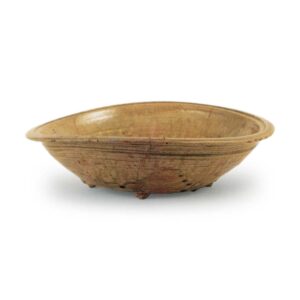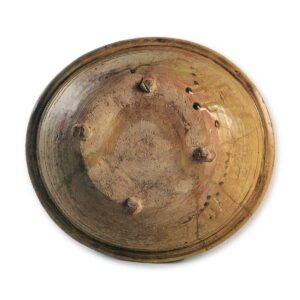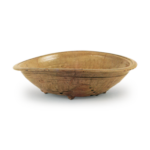

Excavated from Oochigama Kiln, Magajo-cho, Seto City, Aichi Prefecture, Japan
15th century
Height 10.0-11.7cm, Bowl diameter 39.5cm, Bottom diameter 17.2cm
Aichi Prefectural Ceramic Museum
This dish is generally called a folded-rim deep dish in Seto. This name is probably given to this dish because the edge of the mouth of the shallow dish is folded back toward the outside. As an everyday dish, it is one of the longest-lasting types of pottery produced during the entire period of Koseto. Kamakura period vessels have a strong rising body and are often deep. Muromachi period vessels are generally shallow and open outward like this vessel, and large vessels usually have three or four legs. This vessel was produced in the first half of the 15th century when stable ash glaze was applied in large quantities, and both the interior and exterior are yellowish green due to oxidative firing. It is an excellent example of a large form with an excellent glaze tone.








